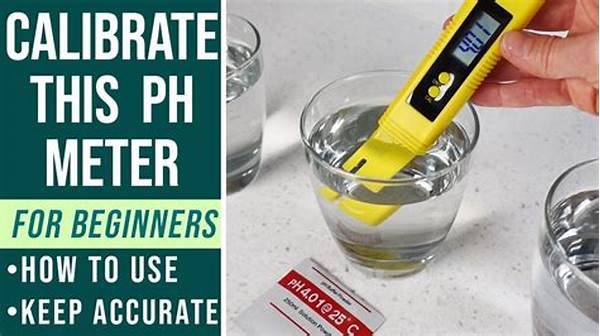In the grand symphony of science and culinary art, pH meters play a pivotal key note. Imagine being able to test the acidity of your grandmother’s secret sauce or ensure that the soil in your garden is perfect for roses! Whether it’s for gourmet cooking, maintaining your swimming pool, or formulating that next skincare product, knowing how to properly use a pH meter can be your gateway to precision and excellence. But before you dive headfirst into the world of ion activity and hydrogen potential, let’s explore why mastering the use of this scientific instrument can be both enlightening and, dare we say, fun!
Read More : Otoscope Ear Examination Instruments
Okay, here’s the scoop: pH levels are not just numbers. They’re the unsung heroes of our daily lives, blending science with practicality. Ever talk to a chemist who’s giddy over the mere idea of a pH scale? Well, they’ve got the right idea. A pH meter tells stories of how acidic or alkaline a substance is – like whether your tap water is more suitable for a laboratory than a glass. Guided by this digital genius, you can save your plants, perfect your recipes, and become the hero your home never knew it needed!
Understanding the Basics of pH Meters
Using a pH meter might sound daunting, but understanding its operation is crucial for precise results. A pH meter measures how acidic or basic a solution is, a task it accomplishes by detecting the voltage difference produced by the concentration of hydrogen ions in the solution.
Calibration: The First Step
Before using the pH meter, calibration is essential. Calibration ensures that the pH meter can provide accurate readings. Typically, the process involves immersing the electrode in calibration solutions of known pH, usually pH 4, 7, and 10. This test is crucial to adjust the meter to cope with the specifics of today’s testing environment, similar to tuning an instrument before a recital.
Real-World Applications of pH Meters
pH meters are widely utilized across various fields. For instance, in agriculture, they help determine soil quality, thereby influencing crop yields and soil health. In the culinary world, chefs rely on them to ensure that flavors and acidity of dishes are balanced. Likewise, in medicine, pH meters ensure the safety and efficacy of drugs and body fluids.
Best Practices for pH Testing
For the best results, it is vital to rinse the electrode with distilled water before each use. This avoids cross-contamination which might skew results. Stir the solution gently to ensure an even distribution of ions across the electrode. A stable reading typically means the measurement is complete.
Maintenance and Care
Caring for your pH meter will prolong its life and ensure precise readings. Store the pH electrode in a storage solution or pH 4 buffer solution to keep it hydrated. Dry electrodes lose accuracy over time. Remember, a well-tended pH meter is a dependable companion in your scientific endeavors.
Proper Steps in Using a pH Meter
Understanding how to properly use a pH meter involves both theory and practice. Here’s an exclusive breakdown of why your dedication to pH mastery is worthwhile:
How to Properly Use a pH Meter: A Detailed Guide
Wouldn’t it be cool to have a pro tip laser-guided map for your pH adventures? Here’s a comprehensive guide to using your pH meter like a seasoned pro:
Essential Practices for Consistent Accuracy
It’s not just about having a pH meter; it’s about using it effectively as well. Here are some foolproof practices:
Read More : Physics Lab Instruments Used In Electricity Experiments
The Significance of pH Measurement
Aside from scientific curiosity, knowing the pH can have significant implications:
Conclusion: Mastering the Art of pH Measurement
Whether you’re gearing up for soil testing marathons or whipping up the perfect sourdough, knowing how to properly use a pH meter can be your scientific superpower. It’s like having a tiny laboratory in your hands!
Bringing Science Home
Picture this: You’ve just baked a pie, but the acidity is off. A quick pH probe lets you redefine perfection. Science has come to your kitchen, your garden, or your lab, with practical magic at its fingertips.
Testimonials: Real-Life Transformations
Take it from Jack, a hobbyist wine maker who swears by his pH meter for balance:
“I never knew pH meters could be so pivotal. They’ve revolutionized my winemaking, ensuring every batch is spot on!”
From high-tech labs to your cozy kitchen nook, the digital wizardry of a pH meter is at your disposal. With hands-on usage and knowledge, precision is not just achievable; it’s expected. So, next time acidity calls your name—be it a culinary crisis, a scientific scrutiny, or an eco-friendly endeavor—let the pH meter be your guide in making informed decisions, one investigation at a time.
